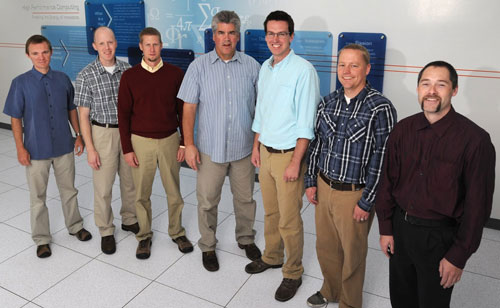NSE graduate student Derek Gaston and team win 2014 R&D 100 Award for MOOSE

Modeling and simulation is standard practice in nearly every scientific field. Idaho National Laboratory’s Multiphysics Object Oriented Simulation Environment (MOOSE) has transformed approaches to predictive simulation, making it quick, adaptable and more accessible. MOOSE is a computer software that can be loaded onto most UNIX-compliant operating systems including, but not limited to, Mac OS X, Ubuntu, OpenSuSE, Fedora, CentOS and Redhat. It is routinely deployed onto high-performance clusters globally, but also runs without any modifications on standard laptop computers. The software’s primary purpose is to solve complex models represented by partial differential equations (PDEs). MOOSE is an object-oriented framework developed using quality-controlled modern software development practices. A rigorous regression testing suite and rich documentation is included with the software. The MOOSE framework consists of several consistently designed, pluggable interfaces that scientists and engineers use to solve domain-specific problems. Internally, MOOSE utilizes the finite element method (FEM) mathematical modeling technique due to its generality and wide applicability.
MOOSE enables development of simulation tools in a fraction of the time previously required. A simulation effort requiring a team of 10 people working for five years can be completed by three people in one year. The simplicity has bred 40 different MOOSE-based modeling applications. The rapidly growing MOOSE user community spans nuclear engineering, material science and geology and includes 45 domestic or foreign labs, universities and companies.
